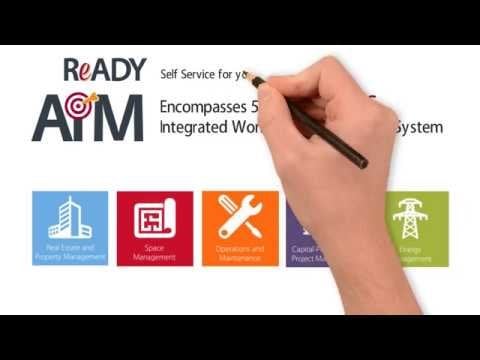Why capital projects in higher education are no worries

Tony Stack

The face of higher education is changing by the day. Not only are we seeing ever-evolving teaching techniques thanks to technology; we’re also moving towards on-site and remote learning hybrid, courtesy of the pandemic.
This puts immense pressure on funding for higher education projects. We need to make sure the technology we’re giving these academic institutions is of a high standard. Likewise, we need to make sure it’s up to date with the latest compliance legislation and cybersecurity. What’s the common denominator in all this?
The M word. It’s no wonder that capital projects in higher education are challenging. But there is a solution – and it’s called capital planning and project management software.
So, why exactly do we need these tools? First, let’s consider the capital project challenges faced specifically by higher education institutions.
Challenges for the higher education sector
What exactly do we mean by capital planning and project management in the higher education sector? We can look at it from a few perspectives:
Project management
In the higher education sector, project management can comprise anything from major construction to administration. One of the biggest challenges with this is managing the many disparate departments that are involved, for example:
- Consultation with academic and administrative clients.
- Developing plans with construction management teams.
- Verifying the quality of work with health and safety managers.
- Keeping operations teams up to date with costs.
Many significant decisions depend on the approval from several departments at once, which requires its own set of heavy-duty paperwork – and a whole lot of data to support the business case.
Capital improvement
This involves tendering for capital – looking at specific projects which will enhance a university building, right from the design process through to the awarding and final construction.
Once again, this will require a solid business case that will need evidence from various departments. Facilities managers may have to justify their case with data on cost savings, student welfare, energy reduction and much more.
Planning
This helps investors understand the long-term view for your academic institution. Specifically, we’re looking at the general development, management and how each space will be used. One of the biggest challenges is making sure we’re getting the best value out of each space – using its full capacity, for example.
Planning helps to designate spaces to various users and manage costs in terms of maintenance and utility bills. Once again, we need full visibility over all our data – income and outgoings – to make sure this builds a strong business case.
Historic preservation
Perhaps considered less important than the abovementioned challenges, historic preservation involves restoring, cleaning and generally maintaining historic facades. This can help to ‘revitalise’ a campus, which in turn may increase its appeal and improve the retention rate for tenants – promising better profits in the long term.
One of the challenges is presenting a business case for the preservation of older buildings, convincing investors that this is a worthwhile spend compared to construction projects starting from scratch.
What do we need to know in preparation for capital planning projects?
Whether you’re consulting academic and administrative clients or alumni and public officials, you’ll need to be prepared to answer the following questions:
- How much will it cost?
- How long will it take?
- How capable are you of taking on a large number of projects at once?
Enter: capital planning and project management software. Thanks to its unique set of features for higher education facilities, capital planning projects in higher education are no worries.
How capital planning and project management software helps to make this process easier
To answer these questions, we need to take a three-pronged approach. We need to plan strategically, helping to prevent backlogs and understand exactly what we need not only to build on, but adapt our existing spaces.
Secondly, we need to ensure we’re making the most of the resources available to us. Are we wasting our money chasing after new developments when we have a perfectly lucrative set of opportunities on our doorstep? It may simply be a case of adapting the space to make sure it’s used to full capacity by as diverse an audience as possible.
Finally, and most importantly, we need to improve customer satisfaction. We can start by answering those questions above, but then it’s about maintaining communication – being transparent and increasing trust for all stakeholders. Is the cost of the project going to adversely affect student life? If so, for how long, and what are the long-term benefits of this investment?
Using capital planning software features to their full potential
So, let’s start by taking a look at the features that can help with our strategic planning. Capital project management software looks at facets of the planning process such as:
- Risk assessment: identifying any potential financial losses or safety risks that could jeopardise the business case.
- Complex financial budgeting: using predictive analytics based on historical data to predict trends and make a more informed application.
- Workflow and contract processes: outlining the key tasks for every stakeholder involved in the project, from construction teams to university staff, administrators and more, with the right digital documentation for each.
- Project management documentation: providing easy access to blueprints and drawings, requests for information, submittals and general correspondence – making sure only authorised users can see integral information.
Resource management
Up next, we need to look at those available resources. Again, there are many facets to this. With the right capital planning and project management software, you can save as much as $0.25 per metric over the course of a year.
How can software do this? For one, it can help you to identify the occupancy levels for your existing buildings. Rather than making a high-cost application for a new development, you may be able to make more of your existing space by shifting staff or changing room layouts.
It’s also great for monitoring sustainability. You can use this software to track your sustainability goals, looking at simple metrics such as energy savings to keep costs down. Once again, this will look attractive to investors as we approach the long-term benefits.
Improving customer satisfaction
The ultimate goal of any long-term capital planning project is to improve customer satisfaction. In doing this, we can get more value out of our higher education spaces, improve retention and generally build our brand reputation.
So, how does capital planning software help us do this?
Integrating operations with capital programmes
Too often, operations are kept isolated from the initial capital project planning. But by integrating this process at the application stage, we can realise the benefits for customers. For example, if we outline how the design of a space will improve student and teacher wellbeing, we can ensure that any funding is specifically allocated to those features – better technology, for instance.
Providing premium quality from the planning stage
All stakeholders need the assurance that they are living, working, and studying in a safe environment. The AssetWorks Capital project management software helps to do this by adhering to strict building standards, for example:
- Building Information Modelling (BIM) support
- Construction Operations Building Information Exchange (COBie2) data compliance
- Facility Condition Assessment integration
- Support for Energy Conservation Measurement and Verification
By offering a safe, regulated project, you can give investors the assurance they need that your project will enhance the wellbeing of all stakeholders for years to come.
What other benefits does this software offer educational institutions?
By having all necessary data accessible in one program, project managers can reduce their CAPEX and generally improve the rate of return for their investors. This goes beyond handling one project alone – by breaking down departments into ‘silos’, managers can oversee multiple projects at once without feeling overwhelmed.
What results is one fluid project lifecycle, as any well-managed project should be. First, we have all the data available to present a good business case in terms of return on investment, sustainability and general stakeholder wellbeing.
Next, we maintain a strong stream of communication between all departments, from design to construction and completion. Finally, we manage expectations when the project is finished – using digital documentation to outline changes such as proposals, directives, orders, payment applications, and punch lists.
Get onboard with capital project management software today
Unlike other industries, education is encumbered by fiscal constraints, and has a whole wealth of stakeholders to satisfy. It’s not just investors – it’s the end-users, from teachers to parents and students, plus every member of the project management team.
That’s why we need all the data in one place. As part of a broader Integrated Workplace Management System, we can apply for capital planning with full transparency. No more lost paperwork. No more cross-departmental conflicts over funding. No more wasted funds or unsustainable developments.
Capital planning in the education sector takes time, but it doesn’t have to take up all your resources. You can speed things up and enjoy higher approval rates with our software.
Contact the higher education team at AssetWorks to find out more.
Subscribe to AssetWorks' Blog & Newsletter
We send out periodic updates to our facilities community.
Read On

What is AiM Software and Do You Mean the AssetWorks IWMS?
You're likely here because you typed something to the tune of "What is AiM software?" into your...
Learn more arrow_forward
What You Need to Know About Capital Planning and Project Management Software
Colleges and universities face an ongoing dilemma:how to meet today’s urgent facility needs while...
Learn more arrow_forward
Why is space planning important to universities in Australasia?
Both in the age of COVID-19 and in general, space planning has risen in prominence to become one of...
Learn more arrow_forward

